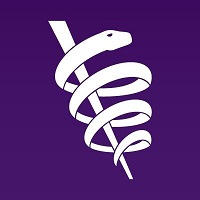 The American Medical Association (AMA) (@AmerMedicalAssn) announced that the Current Procedural Terminology (CPT®) code set is being updated by the CPT Editorial Panel to include immunization and administration codes that are unique to the COVID-19 vaccine under development by AstraZeneca and University of Oxford.
The American Medical Association (AMA) (@AmerMedicalAssn) announced that the Current Procedural Terminology (CPT®) code set is being updated by the CPT Editorial Panel to include immunization and administration codes that are unique to the COVID-19 vaccine under development by AstraZeneca and University of Oxford.
The new CPT codes will be effective for use on the condition that the AstraZeneca vaccine receives approval or emergency use authorizations from the Food and Drug Administration (FDA). The AMA is publishing the new CPT codes now to ensure electronic systems across the U.S. health care system are updated and prepared for the prospect of FDA approval or authorization for the AstraZeneca vaccine.
The AstraZeneca vaccine joins two other COVID-19 vaccines that were previously issued unique CPT codes to report vaccine-specific immunizations once FDA approval or authorization has been granted. On Nov. 10, the AMA announced that COVID-19 vaccines developed by Pfizer and Moderna had been issued unique CPT codes to clinically distinguish each vaccine for better tracking, reporting and analysis that supports data-driven planning and allocation.
“A mass vaccination effort with the first available COVID-19 vaccines presents enormous logistical challenges,” said AMA President Susan R. Bailey, M.D. “The ability to correlate each COVID-19 vaccine with its own unique CPT code provides analytical and tracking advantages that ensures optimal vaccine distribution and administration, especially for patients who will need to complete the two-dose immunization schedule.”
For quick reference, the new Category I CPT code and long descriptor for the AstraZeneca vaccine are:
- 91302 – Severe acute respiratory syndrome coronavirus 2 (SARS-CoV-2) (coronavirus disease [COVID-19]) vaccine, DNA, spike protein, chimpanzee adenovirus Oxford 1 (ChAdOx1) vector, preservative free, 5×1010 viral particles/0.5mL dosage, for intramuscular use
In addition to the new vaccine-specific product CPT code, the AstraZeneca vaccine has been issued vaccine administration CPT codes that are distinct to its two-dose immunization schedule. These CPT codes report the actual work of administering the vaccine, in addition to all necessary counseling provided to patients or caregivers and updating the electronic record.
For quick reference, the new vaccine administration CPT codes and long descriptors for the AstraZeneca vaccine are:
- 0021A Immunization administration by intramuscular injection of severe acute respiratory syndrome coronavirus 2 (SARS-CoV-2) (coronavirus disease [COVID-19]) vaccine, DNA, spike protein, chimpanzee adenovirus Oxford 1 (ChAdOx1) vector, preservative free, 5×1010 viral particles/0.5mL dosage; first dose
- 0022A second dose
In addition to the long descriptors, short and medium descriptors for all the new vaccine-specific CPT codes can be accessed on the AMA website, along with several other recent modifications to the CPT code set that have helped streamline the public health response to the SAR-CoV-2 virus and the COVID-19 disease.
Changes to the CPT code set are considered through an open editorial process managed by the CPT Editorial Panel that collects broad input from the health care community and beyond to ensure CPT content reflects the coding demands of digital health, precision medicine, augmented intelligence, and other aspects of a modern health care system. This rigorous editorial process keeps the CPT code set current with contemporary medical science and technology so it can fulfill its vital role as the trusted language of medicine today and the code to its future.
About the American Medical Association
The American Medical Association is the physicians’ powerful ally in patient care. As the only medical association that convenes 190+ state and specialty medical societies and other critical stakeholders, the AMA represents physicians with a unified voice to all key players in health care. The AMA leverages its strength by removing the obstacles that interfere with patient care, leading the charge to prevent chronic disease and confront public health crises and, driving the future of medicine to tackle the biggest challenges in health care.
